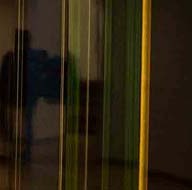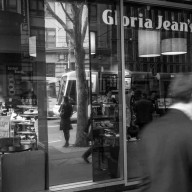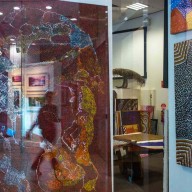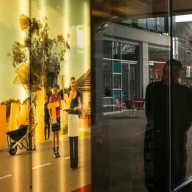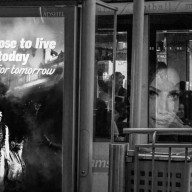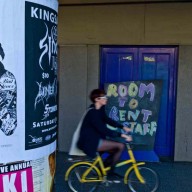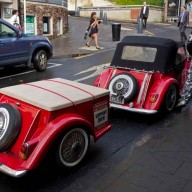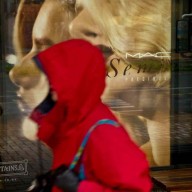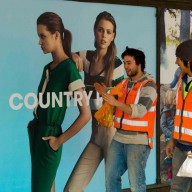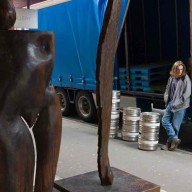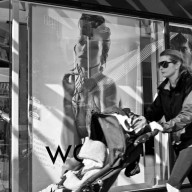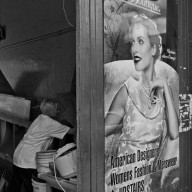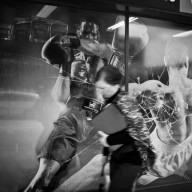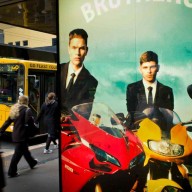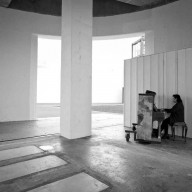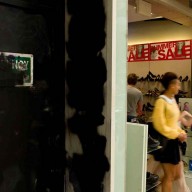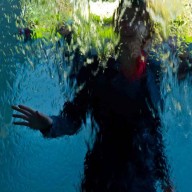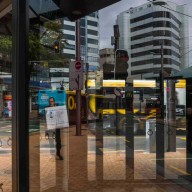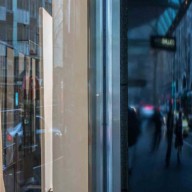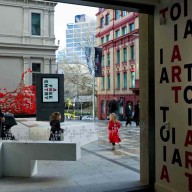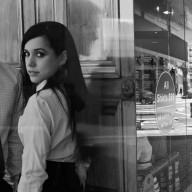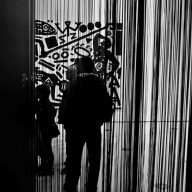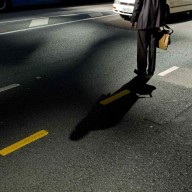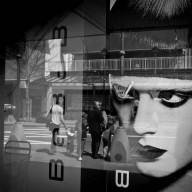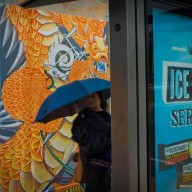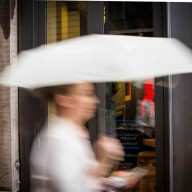Double Vision:
Reflections On Urban Environments
Denis Friar
Marg Morrow Gallery at Village Arts
Exhibition Open 18th January – [Extended] 8th March 2014
Opening 4pm Saturday 18th February 2014
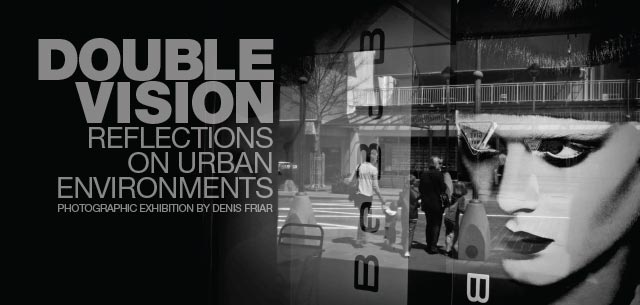
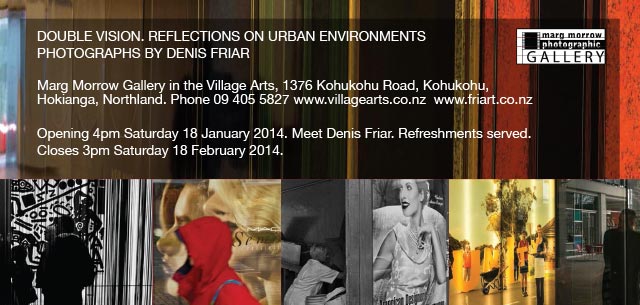
Review of Denis Friar’s exhibition Double Vision
© Joe Citizen 22nd January 2014
Denis Friar’s work exists between blinks, in the transitory moments we all share on the street. Yes we do see them, those absurd juxtapositions and barely revealed social relations, occasionally breaking the surfaces of what we thought we saw and who we think we are. They pass by so quickly that our conversation of them is restrained by memory and the need for some shared recognition with those similarly attuned.
Such experiences are rarely documented beyond the staged, or are more commonly explored in the slowed down persistence of 25 frames per second. This too restrains the conversation, for video’s inability to expose light at anything other than some universal constant means that the perception of time is chopped up like some regulated clock. Rather than employing a machine vision to reveal unseen worlds as controlled measures of time and space, Friar uses social documentary practices of revealing through layers of happenstance and audience interpretation. His technique of combining the dissimilar with slow shutter speeds and a general aversion to revealing the specific identity of his subjects, means that his images are less ‘a slice of life’ and more like some theatrical intervention. As viewers we can now discuss amongst ourselves the fluidity of our urban socio-cultural identities, not in the usual realist modes of photography but in a painterly manner, or even in a performative sense where we can recognise our interconnecting worlds, and our subject positions within them.
Friar also helps our participation by avoiding major digital post-production. Not emphasising particular tones or colours might seem somewhat archaic in a digital era, but this strategy helps to disarm a more conventional authorial voice which might otherwise interfere with audience recognition. That Friar manages to elicit an acknowledgement of the blurred boundaries between the real and the unreal without the ambiguity of digital manipulation, is a testament to both his ability as an artist, and conversely a nod to the repositioning of his subjects within the relational imaginaries found in our own ideological landscapes. This is indeed a double vision as layers of intent and layers of interpretation inform each other, for Friar knows that representational identities are participatory processes, rather than anything that can be fixed to a frame and gazed at like a fly in amber.

